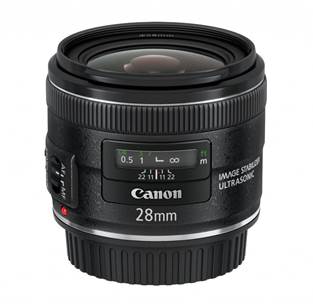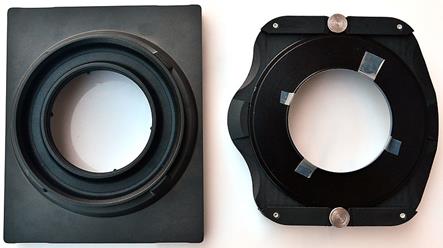Photography
is a two-dimensional medium, but most of the things we photograph are
three-dimensional, so you need to try to capture a sense of that third dimension
– depth – otherwise your images will look flat. This is especially true with
landscape photography. A successful landscape image should make the viewer feel
that they could almost walk into the scene. The easiest way to do it is to play
on the fact that the brain understands the effect distance has on the size of
an object: a phenomenon known as diminishing perspective, or diminishing scale,
where objects become smaller with distance. By including foreground interest,
you can emphasise diminishing scale because the features close to the camera
will appear bigger than those further away, so depth/distance is implied and a
dramatic sense of scale is achieved. Foreground interest also provides the
viewer with a logical entry into the image, from where they can then go on a
visual journey through the composition.

Canon Lens 28mm
Wide-angle
lenses from 17-28mm are the best choice for exploiting foreground interest. Not
only do they allow you to include a wider area in the photograph than the eye
can take in, but they also appear to exaggerate and stretch perspective – the
wider the lens (the shorter the focal length), the stronger this effect is.
Wide-angle lenses also give increased depth-of-field at small apertures, such
as f/11 and f/16, so you can record everything in sharp focus from the near
foreground to the far distance.

Photo by Sarah Gale
What
makes good foreground interest? Anything really. Rocks, boulders, ripples in the
sand, streams, pools of water, walls, fences, paths, furrows in a field, rows
of crops… Keep an eye on what’s a metre or two in front of you, then move in
low and close with your wide-angle. Features that create lines in the landscape
are particularly effective because, as well as adding a sense of scale, they
also lead the eye into and through the scene.
Best kit for travel photography?
You've
not indicated what your budget is, so we assume you're looking for the best
possible quality outside of opting for pro gear. The lens you definitely need
to take with you is an ultra wide-angle zoom. Your Canon uses an APS-C sensor,
so the focal length of every lens is effectively increased by 1.6x, meaning you
need to opt for the widest possible lens to capture sweeping vistas. There are some
very good options: Sigma has two 10-20mm zooms in its range (16-32mm after the
crop factor) and both are excellent. While the newer lens has a fast f/3.5
maximum aperture, the older f/4-5.6 is cheaper and gives very similar quality
results. Look to pay around $815 and $701 respectively. The other option is the
Canon EF-S 10-22mm f/3.5-4.5 USM, which costs more at $1,076, but has the edge
in terms of image quality.

Lens filter
Regarding
filters, take a polariser to deepen blue skies and a 0.6ND grad to retain
detail in the sky when shooting landscapes. Two popular brands are Cokin and
Hitech. You may just get away with an 84mm system, but this may result in
vignetting, so opt for the 100mm filter system to be on the safe side. Have a
fantastic trip!